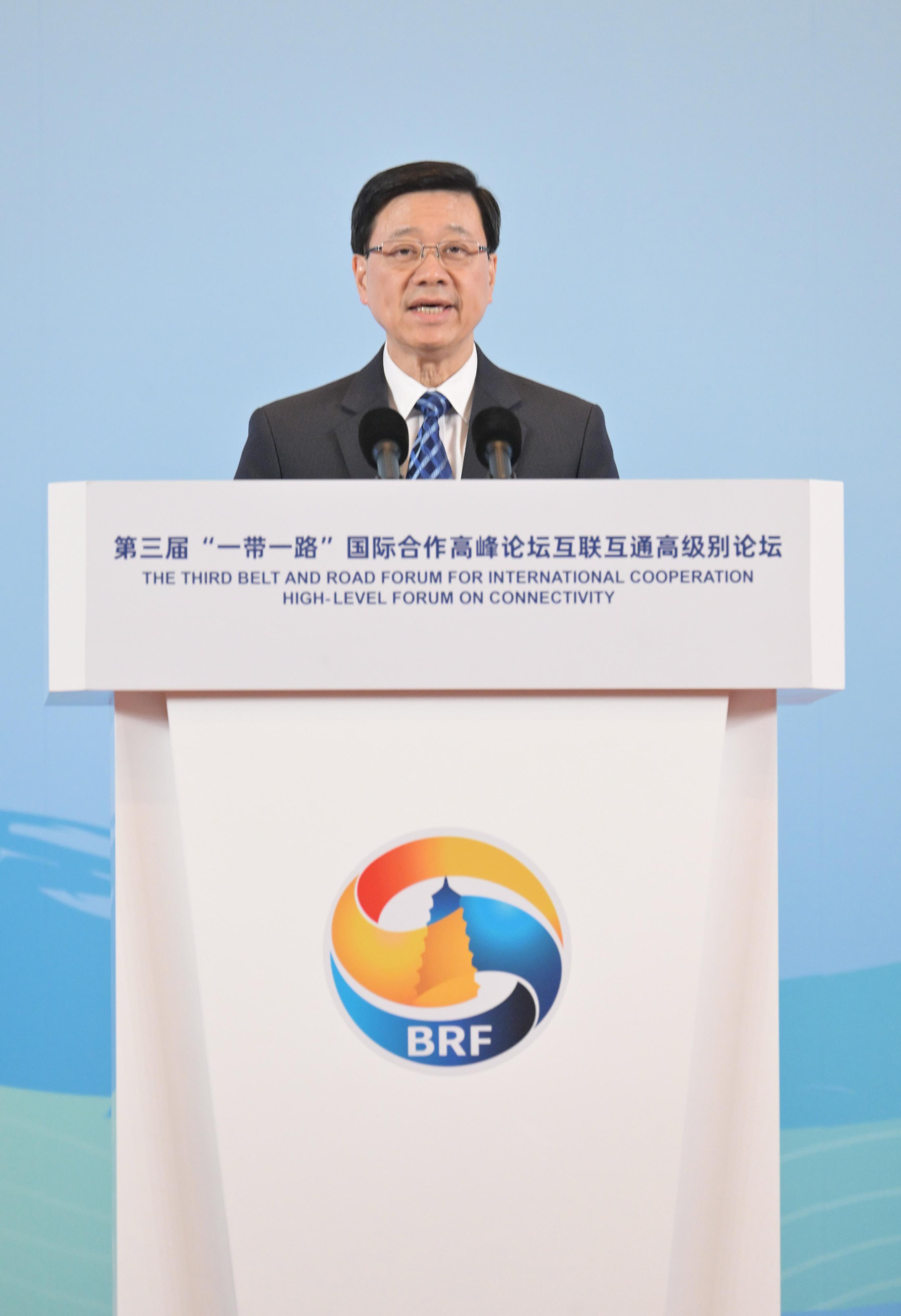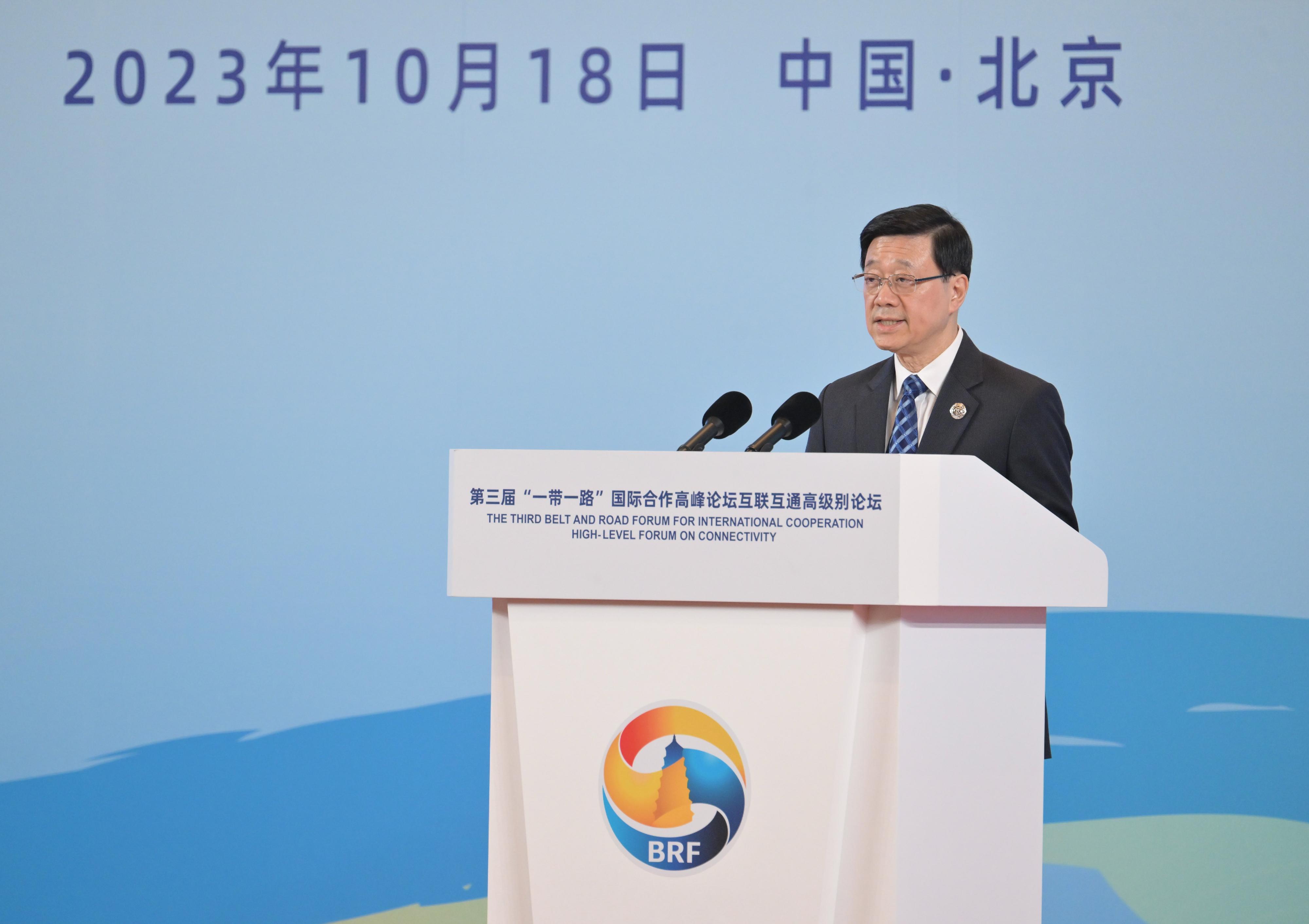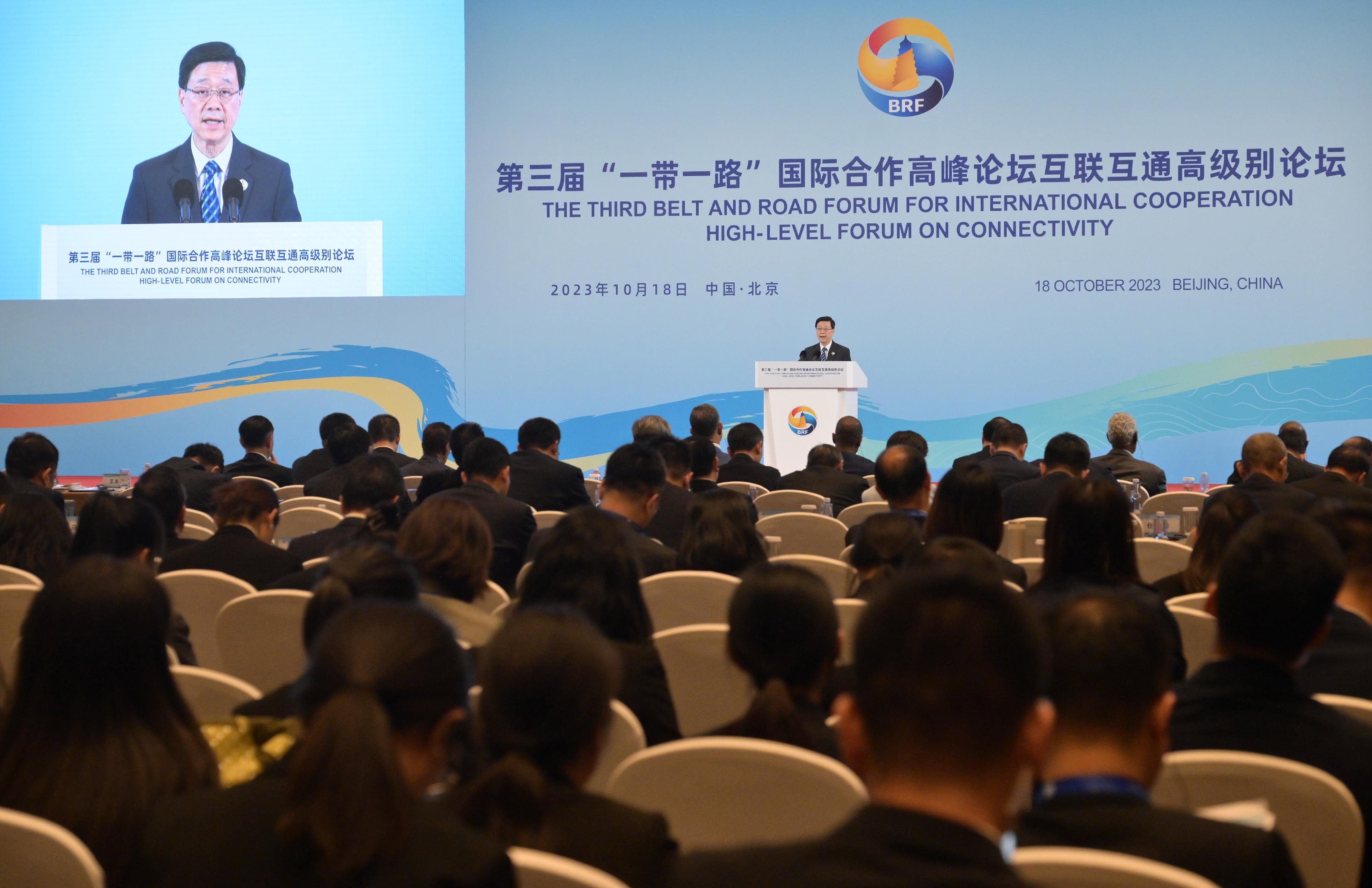CE’s speech at Thematic Forum on Sub-national Cooperation of third Belt and Road Forum for International Cooperation in Beijing (with video)
Following is the speech (English translation) by the Chief Executive, Mr John Lee, at the Thematic Forum on Sub-national Cooperation of the third Belt and Road Forum for International Cooperation in Beijing today (October 18):
The Honourable Deputy Director Wang Linggui (Deputy Director of the Hong Kong and Macao Affairs Office of the State Council), Excellencies, distinguished guests, ladies and gentlemen,
Good afternoon. I am pleased to lead a high-level delegation of the Hong Kong Special Administrative Region (HKSAR) of the People’s Republic of China to participate in this year’s Belt and Road Forum for International Cooperation here in Beijing. Our 70-strong delegation comprises leaders from political and business sectors, and we are glad to discuss regional co-operation with you at this thematic forum.
Let me first express my gratitude to the forum’s organising committee for being supportive and arranging the Hong Kong session at this thematic forum. Our delegation looks forward to exchanging views and co-operating with other forum participants to enhance the connectivity between regions, cities and people.
Under “one country, two systems”, Hong Kong has the distinctive advantages of enjoying the Mainland’s strong support and being closely connected to the world. We strive to make the best use of our status as an international financial, shipping and trade centre to take forward regional co-operation in the context of the Belt and Road Initiative in four aspects, thereby achieving mutual benefit.
First, actively integrating into the country’s overall development. The Guangdong-Hong Kong-Macao Greater Bay Area (GBA) is formed by the two special administrative regions of Hong Kong and Macao as well as nine cities in Guangdong Province. The GBA has a total population of over 86 million and a combined gross domestic product of more than US$1.9 trillion, which is equivalent to that of the 10th largest economy in the world. Hong Kong has been actively promoting in-depth integration of the GBA and the Belt and Road Initiative. We join hands with other GBA cities in pursuing high-level regional co-operation and complementing each other for high-quality development along the Belt and Road.
Second, going all out to promote unimpeded external trade. This year, I have led high-level HKSAR delegations to visit countries in the Middle East and the Association of Southeast Asian Nations. We have signed some 50 co-operation agreements with local enterprises and organisations in a bid to boost exchange and co-operation.
Hong Kong has always championed free trade. We have already signed free trade agreements with 20 economies, and investment agreements with 31 economies around the world. We are striving for early accession to the Regional Comprehensive Economic Partnership, the world’s largest free trade agreement, to deepen regional economic collaboration.
Third, enhancing mutual learning and people-to-people bonds. As an international metropolis where East meets West, Hong Kong has signed memoranda of understanding on cultural co-operation with more than 10 Belt and Road partner countries to enhance cultural and arts exchanges. Hong Kong’s cultural and creative talent travel around the globe every year for performances and exchanges, promoting the inheritance of traditional culture and establishing friendships with people all over the world.
This month, Hong Kong is hosting the Asia+ Festival for the first time. The festival has attracted over 20 Belt and Road countries to showcase their arts, thereby strengthening inclusiveness among peoples of different places and promoting the spirit of friendly co-operation among regions.
Fourth, deepening the exchange of young professionals. The HKSAR Government launched the Belt and Road Scholarship and the Scheme for Subsidy on Exchange to Belt and Road Regions for Post-secondary Students in 2016 to encourage co‑operation in education and training. So far, we have supported more than 3 000 Hong Kong tertiary students to go on exchange to Belt and Road countries, and supported students from about 40 Belt and Road countries to study in Hong Kong.
We have also introduced the Funding Scheme for International Youth Exchange, which has funded nearly 50 youth exchange programmes, covering different Belt and Road countries. We will continue to provide exchange and internship opportunities in regions along the Belt and Road, so that Hong Kong’s young people will be able to take part in Belt and Road regional co-operation.
What’s more, Hong Kong has been actively mobilising its professional forces to collaborate with our Belt and Road counterparts in training, seeking in-depth co-operation in such areas as railway technology and operation, management of cargo and passenger transportation, electrical engineering, corruption prevention and preventive education and so on, with a view to facilitating regional development.
Ladies and gentlemen, regional co-operation is an integral part of the concerted effort to develop the Belt and Road. Hong Kong will work hand in hand with you to further achieve win-win results at different levels.
I look forward to the further advancements of Belt and Road regional co-operation, and I wish this thematic forum a resounding success. Thank you. read more




